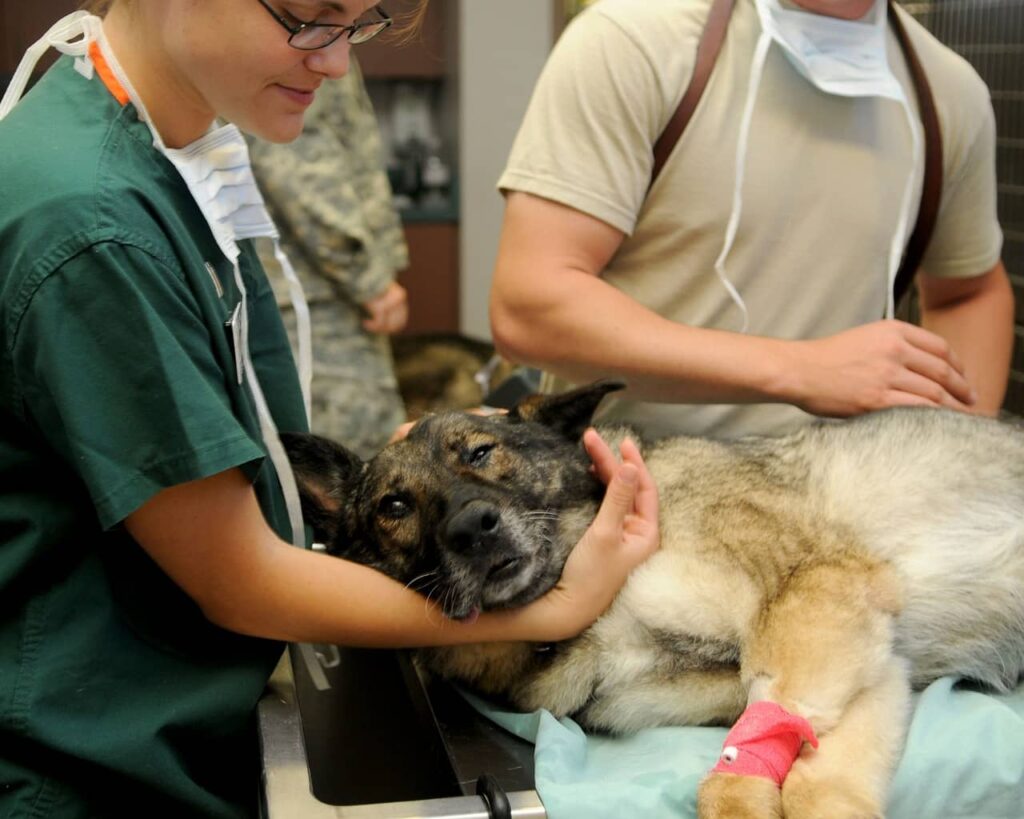Pet Care Insurance: Everything You Need to Know

Pet owners know how much they value their furry friends. From cheerful tail wags to cozy cuddle sessions, your pet is not just an animal – they’re your family. But just like humans, accidents or unexpected health problems can happen to pets. Vet bills can quickly add up, making providing for your pet’s care harder without financial strain.
This is where pet care insurance comes in. With the rising costs of veterinary services and the unpredictability of pet health, pet care insurance provides peace of mind, knowing your pet’s health and finances are protected.
In this guide, we’ll explore everything you need to know about animal health insurance. We’ll explore how it works, the types of plans available, and tips for finding the most comprehensive coverage for your pet’s unique needs. LET’S DIVE IN!
What is pet care insurance?
Pet care insurance covers pet medical treatment costs. Like human health insurance, it covers many expenses, from routine check-ups to emergency surgery. An insurance policy for pets aims to reduce the financial burden of unexpected veterinary bills. This allows you to focus on your pet’s recovery instead of worrying about care costs.
In exchange for a monthly premium, pet insurance companies typically cover:
Accidents and injuries: Coverage for broken bones, car accidents, or poisoning.
Illnesses: Treatment for chronic conditions, infections, or serious diseases like cancer.
Wellness care: Preventive care, such as vaccinations, flea treatments, and annual check-ups (depending on the plan).
Different pet insurance providers offer various coverage levels, so it’s imperative to choose the plan that perfectly fits your pet’s lifestyle, age, and health history.

Types of Pet Care Insurance Plans
It’s impossible to find a single pet insurance plan that fits everyone’s needs. Providers offer a variety of plans that cater to different needs. Understanding the options is crucial to finding the right coverage for your animal.
1. Accident-Only Coverage
Accident-only plans are typically the cheapest pet insurance. These plans cover only accidents-related injuries, such as:
-
Broken bones
-
Cuts or lacerations
-
Vehicle accidents
-
Poisoning
Unfortunately, they do not cover illnesses, routine care, or healthcare in general. This plan is an excellent option for people who have pets and are concerned about accident-related injuries and emergency costs.
2. Illness and Accident Coverage
This plan covers both accidents and illnesses. Suppose your pet develops a serious illness, such as cancer, kidney disease, or an infection. In that case, insurance will cover treatment costs. These plans are more expensive than accident-only coverage but offer broader protection.
3. Comprehensive coverage
Comprehensive animal health insurance plans cover accidents and illnesses and often include wellness care, such as preventative care like vaccinations, flea/tick treatments, and check-ups. Although comprehensive plans are expensive, they provide the most extensive coverage for emergency and routine treatment.
4. Wellness plans.
Preventative medical treatment is the focus of our wellness plans. They cover regular veterinary visits, vaccinations, and treatments that keep your pet healthy. However, these plans generally do not cover accidents or illnesses. Some pet owners add a wellness plan to their insurance policy to ensure thorough preventative care.
Key Benefits of Pet Care Insurance
Pet care insurance can offer numerous advantages for you and your pet. Here are some of the key benefits:
1. Financial Protection Against Unexpected Costs
One of pet care insurance’s most significant benefits is its financial protection. Veterinary bills can be unpredictable and costly, especially in emergencies. Insurance helps cover these unexpected costs, ensuring you can afford your pet’s treatment without breaking the bank.
2. Access to Better Care
With pet insurance, you don’t have to choose between your pet’s well-being and budget. Without the financial burden, you can opt for your pet’s best care, including specialized treatments, surgeries, or medications.
3. Peace of Mind
Knowing that your pet is covered in case of an accident or illness provides peace of mind. You won’t have to stress over whether you can afford the care your pet requires when they need it most. Pet insurance removes the financial stress, allowing you to focus on helping your pet recover.
4. Early Diagnosis and Treatment
Many pet owners delay seeking medical care for their pets because of cost concerns. Pet care insurance encourages timely visits to the vet by reducing out-of-pocket expenses, which can lead to early diagnosis and treatment of health issues. This proactive approach can help prevent more serious problems down the road.
5. Budgeting for Pet Care
Pet insurance helps you budget for your pet’s healthcare needs. With fixed monthly premiums, you know exactly how much to set aside for your pet’s medical care, which helps you manage your finances more effectively.
6. Coverage for Specialized Treatments
Certain medical treatments, such as cancer treatments, surgeries, or emergency procedures, can be expensive. Pet insurance ensures that even costly specialized treatments are covered, allowing your pet to receive the best care possible without delay.

How to Choose the Best Pet Care Insurance Plan
When it comes to selecting the right pet care insurance plan, there are a few key factors to consider:
1. Assess Your Pet’s Health Needs
Your pet’s age, breed, and health history are important factors in choosing an insurance plan. Older pets or pets with pre-existing conditions may require more comprehensive coverage. In comparison, younger pets may do well with basic accident-only coverage.
For example, if you own a breed known for certain health issues (e.g., bulldogs prone to respiratory problems or dachshunds prone to spinal issues), opting for a more comprehensive plan could save you from steep vet bills.
2. Understand What’s Covered and What’s Not
Before purchasing a plan, review the coverage details to ensure it includes the treatments your pet may need. Some plans may exclude certain conditions or limit coverage for specific treatments.
For example, some insurance policies may exclude coverage for conditions like hip dysplasia if they are deemed pre-existing, or they may limit the number of claims per year for certain treatments.
3. Compare Premiums and Deductibles
The cost of pet care insurance can vary depending on the level of coverage and your pet’s profile. Compare premiums (the monthly cost of the policy) and deductibles (the amount you pay out-of-pocket before insurance kicks in) to find a plan that fits your budget.
A slightly higher premium with a lower deductible makes sense, especially if your pet is at risk of frequent medical issues. On the other hand, if your pet is healthy, a lower premium with a higher deductible could be more economical.
4. Check the Reimbursement Process
Insurance companies differ in how they reimburse claims. Some pay the vet directly, while others require you to pay upfront and then reimburse you after you submit a claim. Ensure the reimbursement process is clear and efficient.
Additionally, check whether the reimbursement is based on your vet’s pricing or if it is a set amount per condition. Understanding the reimbursement terms can help you gauge how much you will get back from the insurer.
5. Customer Reviews and Ratings
Check customer reviews and ratings for insight into the provider’s reliability, customer service, and claim process. Pet insurance is an investment, and choosing a reputable provider is crucial for ensuring smooth service when needed.
Look for feedback on how quickly claims are processed, how easy it is to contact customer service, and the overall satisfaction of other pet owners. Third-party sites like Trustpilot or Consumer Affairs can provide real, unbiased opinions.

Common Misconceptions About Pet Care Insurance
Several misconceptions about pet care insurance may prevent pet owners from investing in it. Let’s clear up a few of these misunderstandings:
1. Pet Insurance is Too Expensive
While premium costs can vary depending on your pet’s age, breed, and health, many insurance plans are affordable. Some accident-only plans start at $10–$15 per month, while comprehensive coverage typically ranges from $30 to $70 monthly. The long-term benefits of having insurance far outweigh the short-term costs, especially if your pet needs emergency care.
2. Pet Insurance Covers All Pre-Existing Conditions
This is a common misconception. Pet insurance typically does not cover pre-existing conditions, including injuries, illnesses, or medical conditions that your pet was diagnosed with before purchasing the policy. However, some policies may offer coverage for conditions resolved for a certain period (e.g., a year or more without symptoms).
3. I Can Only Use One Vet with Pet Insurance
Many pet insurance plans allow you to visit any licensed vet. This flexibility is one of the advantages of pet insurance, as it doesn’t tie you to a specific network of providers. However, checking with your insurer to confirm they don’t have network restrictions is important.
4. Pet Insurance Covers Routine Vet Visits
Standard pet insurance policies generally do not cover routine care, such as annual check-ups, vaccinations, and dental cleanings. However, many providers offer wellness add-ons that cover these services. If routine care is important to you, opt for a plan that includes it.
Additional Tips for Pet Care Insurance
Consider Multi-Pet Discounts: If you have multiple pets, some insurance companies offer discounts for insuring more than one animal under the same policy. This can significantly lower the overall cost of coverage.
Look for Customization Options: Some pet insurance plans allow you to customize coverage to suit your pet’s specific needs, whether for certain breeds, ages, or medical histories. This flexibility ensures you’re paying for what you need without overpaying for unnecessary coverage.
Understand Policy Exclusions: Be sure to review the policy’s exclusions carefully. For example, certain activities, such as dog sports or breeding, may not be covered under some plans.

Conclusion:
Choosing the right pet care insurance plan is an important decision that can help protect your pet’s health and ensure you have the financial support you need in unexpected medical emergencies. Whether you’re considering accident-only coverage or a comprehensive plan, choosing a policy that aligns with your pet’s needs and budget is key.
By researching, comparing plans, and considering your pet’s health risks, you can find the best pet care insurance for your furry companion. Don’t wait until an emergency arises – get the peace of mind you deserve by securing a plan today.
FAQs:
1. What does pet care insurance cover?
Pet care insurance typically covers a wide range of medical expenses, including:
Accidents and injuries (e.g., broken bones, cuts, or accidents)
Illnesses (e.g., infections, cancer, or chronic conditions)
Surgery (e.g., spaying/neutering, emergency surgeries)
Medications prescribed by a vet
Preventive care (depending on the plan, such as vaccinations or routine check-ups)
However, it’s essential to check your specific policy to understand what is covered and what isn’t.
2. Does pet insurance cover pre-existing conditions?
Most pet insurance policies do not cover pre-existing conditions. A pre-existing condition is any health issue your pet had before purchasing the insurance. Some providers might cover conditions resolved for a certain period (usually around a year). Still, it’s crucial to clarify this with your insurer beforehand.
3. Is pet insurance worth the cost?
Pet insurance can be well worth the cost, especially if your pet requires unexpected medical treatment or has chronic health problems. Its financial protection can save you thousands of dollars in vet bills, giving you peace of mind. For younger pets, it can also help cover preventive care and early treatments that keep them healthy long-term.
4. How do I choose the best pet insurance plan?
When selecting the best pet insurance plan, consider the following factors:
Your pet’s age, breed, and health history: Older pets or pets with pre-existing conditions may need more comprehensive coverage.
The level of coverage: Some plans cover accidents only, while others include illnesses and routine care.
Premium and deductible: Compare premiums and deductibles to find a plan that fits your budget.
Customer reviews: Review ratings and feedback from other pet owners to assess the insurer’s reliability.
5. Can I use any vet with pet insurance?
In most cases, you can visit any licensed veterinarian, regardless of affiliation with a specific network. However, some insurance plans may have a network of preferred vets. Make sure to verify this with your insurer before purchasing the policy.
6. What is the typical cost of pet insurance?
Pet insurance costs depend on several factors, such as your pet’s age, breed, and location. On average, premiums range from $20 to $70 per month. Accident-only plans are cheaper, while comprehensive plans, which cover more extensive treatments, are more expensive. Wellness add-ons will also increase the monthly premium.
7. Will pet insurance cover my pet’s routine check-ups?
Routine care, including annual check-ups, vaccinations, and dental cleanings, is not typically covered under standard pet insurance plans. However, many insurers offer wellness plans or add-ons covering preventive care. You can opt for these plans if you want coverage for routine visits.

















Recent Comments